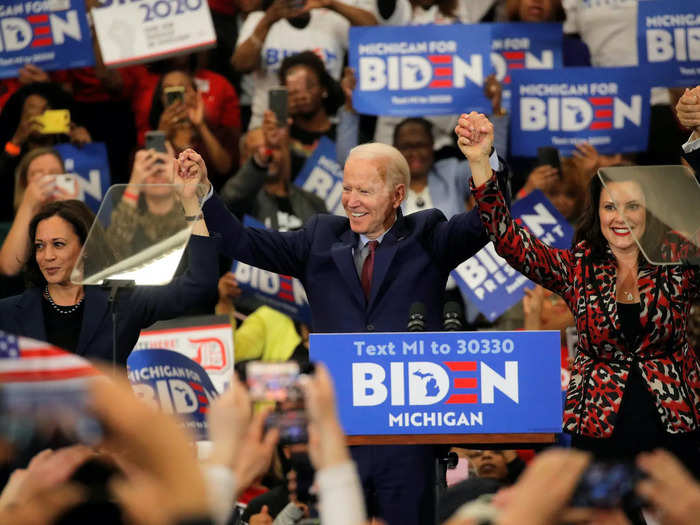- Home
- slideshows
- miscellaneous
- 3 big trends explain Bernie Sanders' flame out in the 2020 Democratic primaries
3 big trends explain Bernie Sanders' flame out in the 2020 Democratic primaries
1. The end of caucuses.

2. The suburban realignment.

In a nutshell, the past four years have seen the GOP trade the suburbs, which are prosperous, growing, and diverse, for ever greater majorities in rural areas, which are not.
Democrats, for example, now hold 43 of the wealthiest 50 congressional districts, compared to just 30 before the 2016 election.
This realignment has swelled the Democratic electorate with affluent, educated voters who care about climate change and gun control but also like their private health insurance and aren't ready for the socialist revolution.
And these voters came out big for Biden last night. Suburban Oakland County, the wealthiest county in Michigan by median household income, went for Clinton by 5% in 2016 but 22% for Biden last night. St. Charles County, the wealthiest county in Missouri by the same measure, actually went to Bernie by 10% in 2016. Last night, Biden won it by 28%.
This pattern was repeated last night everywhere from suburban Seattle to suburban St. Louis, powering Biden's impressive string of victories in the process.
3. Democrats' desire to avoid a divisive primary.

In 2016, Sanders leveraged the momentum from his surprise win in Michigan to compete deep into the primaries. The result was a protracted and divisive nomination process that left Clinton scarred going into the general election. Democrats seem determined to avoid another long and acrimonious nomination battle that could raise Trump's reelection chances.
There is precedent for this. 2004 was the last time Democrats faced off against a Republican President detested by the political left. In that contest, Democrats were quick to rally around John Kerry after his surprise pair of victories in Iowa and New Hampshire, effectively handing him the nomination on Super Tuesday.
There appears to be similar dynamic at play in this nomination contest, with Democratic voters falling behind the frontrunner even though they may not totally align with him. One telling example of this was Michigan's current Lieutenant Governor Garlin Gilchrist, who voted for Sanders in 2016 but supported Biden this time around.
Democrats, of course, went on to lose the 2004 election. But the fact they did so well—coming within 120,000 votes of unseating a President who started that election year with a 60% approval rating—suggests that Democrats' quick resolution of that primary allowed them to overperform in the general. If 2020 follows a similar path, the biggest loser last night may not have been Bernie Sanders but rather Donald Trump.
Brent Peabody is a current Fulbright Scholar in Brazil.
Popular Right Now
Advertisement